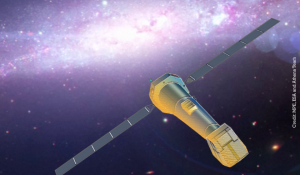 Mission Status
Mission Status
Athena (Advanced Telescope for High ENergy Astrophysics) is the upcoming X-ray observatory of the European Space Agency (ESA), selected in 2014 by ESA in the Cosmic Vision program (alongside JUICE and LISA) to address scientific questions regarding “the energetic and hot Universe.”
Between November 2022 and November 2023, Athena underwent a “design-to-cost” review exercise, ensuring that the total mission cost for ESA remains below a stringent cap of 1.3 billion euros. This process was supported by the NewAthena Science Re-definition Team (SRDT).
On November 8, 2023, the Science Programme Committee (SPC) of ESA approved a restructured version of the observatory. The SPC recognized that Athena in its revised form, as the flagship mission of ESA’s Scientific Programme, will transform our understanding in nearly every corner of modern astrophysics. Industrial activities are expected to resume in the second quarter of 2024, aiming for adoption in 2027 and a planned launch in 2037.
Science Goals
Athena will study the physics of accretion into compact objects, find the earliest SuperMassive Black Holes (SMBH) and trace their growth even when in a very obscured environment, and address how they influence the evolution of their host galaxy and environment through feedback processes.
At the same time Athena will study how hot baryons assemble into groups and clusters of galaxies, determine their chemical enrichment across cosmic time, measure their mechanical energy and characterize the missing baryons which are expected to reside in intergalactic filamentary structures.
Athena will also have a fast target of opportunity observational capability, enabling studies of Gamma-ray Bursts (GRBs) and other transient phenomena, like Gravitational Wave’s electromagnetic counterparts. As an observatory, Athena will offer vital information on high-energy phenomena on all classes of astrophysical objects, from solar system bodies to the most distant objects known.
Athena will consist of a single large-aperture X-ray telescope, utilizing a novel technology (High-performance Si pore optics) developed in Europe, with 12m focal length and 5 arcsec half energy width (HEW) angular resolution. The focal plane contains two instruments. One is the Wide Field Imager (WFI) providing sensitive wide field (40×40 arcmin) imaging and spectroscopy. The other one is the X-ray Integral Field Unit (X-IFU) delivering, for the first time, spatially resolved high-resolution X-ray spectroscopy over 5 arcmin diameter field of view.
With its unparalleled capabilities, Athena will be a truly transformational observatory, operating in conjunction with other large observatories across the electromagnetic spectrum available in the early 2030s (like ALMA, ELT, JWST, SKA, CTA, etc).
Approximately 30 researchers from INAF-OAS are involved to varying degrees in the preliminary study for the development of Athena and its instruments.
